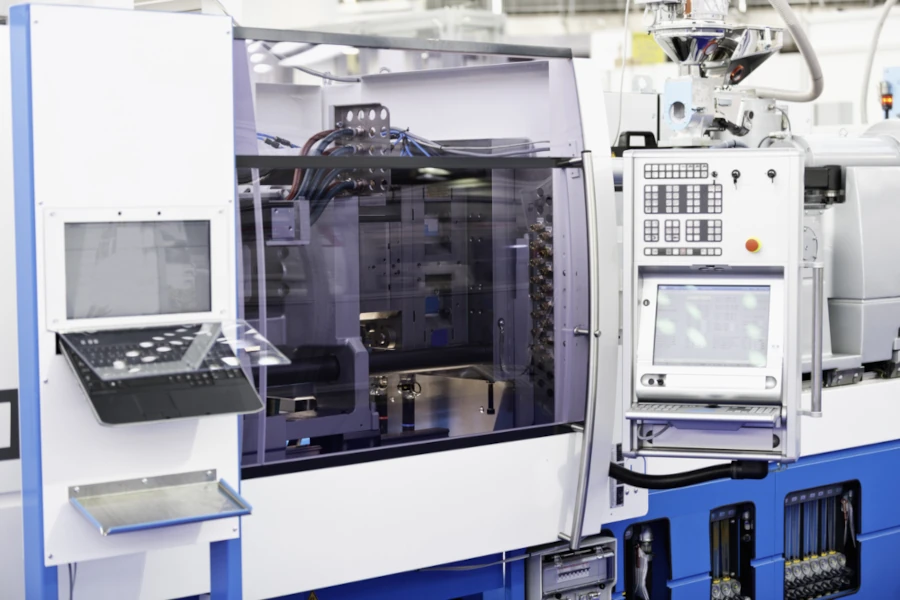
Understanding Metal Injection Molding Costs for Parts & Tooling
Used across a wide range of industries, metal injection molding (MIM) is not only a popular method of manufacturing metal components in large volumes, it is also extremely efficient for creating smaller, more intricate parts. In addition to producing large-scale quantities, the MIM method reduces raw material waste and allows for an impressive level of customization and tailoring to unique metal component requirements or specifications.
A variety of factors should be considered before deciding whether MIM is a cost effective and efficient way to manufacture your project.
What Factors Affect MIM Costs?
When it comes to cost and potential cost savings, there are three common ways to produce metal injection molds:
- CNC Machining
- 3D Printing
- Electrical Discharge Machining (EDM)
Metal Injection Molding Techniques
1. CNC Machining
CNC Machining, or Computer Numerical Control Machining, uses computerized controls to produce large amounts of identical pieces with very unique requirements, measurements, sizes, and weights.
A downside to CNC machining is that the molds may require multiple tool changes, slowing down the process and therefore increasing the cost. Additionally, CNC machining requires skilled workers and a dedicated workspace – this leads many manufacturers to outsource production to other service providers.
2. 3D Printing
Additive Manufacturing (AM), sometimes referred to as 3D printing, is being seen more and more in factories and manufacturing industries due to its efficiency. AM allows for a large amount of variety in specs, measurements, thicknesses, depths, and other intricacies, so the level of design freedom created with this technique is quite expansive. AM also creates molds that allow for better detail and surface finish, which is desirable for metal components.
Molds can quickly be 3D printed and tested before mass production, providing both time and cost savings. Skilled workers can be used for higher-value tasks while the printing process is taking place. Lastly, 3D printed molds are created by adding material layer-by-layer instead of taking away material like subtractive techniques. This leads to less waste and additional cost savings.
3. Electrical Discharge Machining (EDM)
Electrical Discharge Machining or EDM is a technique that removes unwanted material by using electrical discharges. In this case, the unwanted material is excess metal that the process erodes until the desired shape and design are created.
Unlike 3D printing, material is being taken away, leading to more wasted material. Similar to CNC machining, EDM is an industrial process that’s often outsourced to machine shops.
Part Design Requirements
The more complex the design, the more complex the mold, and the more time overall spent on specifications. Simplifying the design, if possible, can save a lot of money. You don’t want to cut corners, but you might be able to create something less involved that’s just as applicable.
Part Size
The larger the part you are manufacturing, the larger the mold will need to be to accommodate that part. Larger parts also require more material, increasing the cost compared to the same design with smaller dimensions.
Ways to Reduce the Costs of Metal Injection Molding
Metal Injection Molding parts can provide a huge time and cost savings due to its volume and consistency. Manufacturers and businesses can continue to track and adjust their MIM spending in a few different ways:
- Adjusting the surface finish. For example, do all parts need an A-class, mirror polished finish, or will a D-1 matte finish work just as well? The higher the surface finish or luster, the more labor and time are needed.
- Ask for quotes for the same job across the three different mold methods: CNC Machining, 3D Printing, and Electrical Discharge Machining
- Higher quality or more pricey metal materials will affect the overall cost. Make sure to understand the specifications and design to find out which metal is the right fit versus what’s the most desired.
Does MIM Fit the Bill For Your Production?
The cost of MIM tooling depends on a variety of factors, including part size, volume, desired surface finish, materials, and intricacy of design. This can be a delicate balance, so it’s important to be in contact with a metal manufacturer that’s well versed in all aspects of the process.
If you’d like to learn more about metal injection molding, check out our blog.
